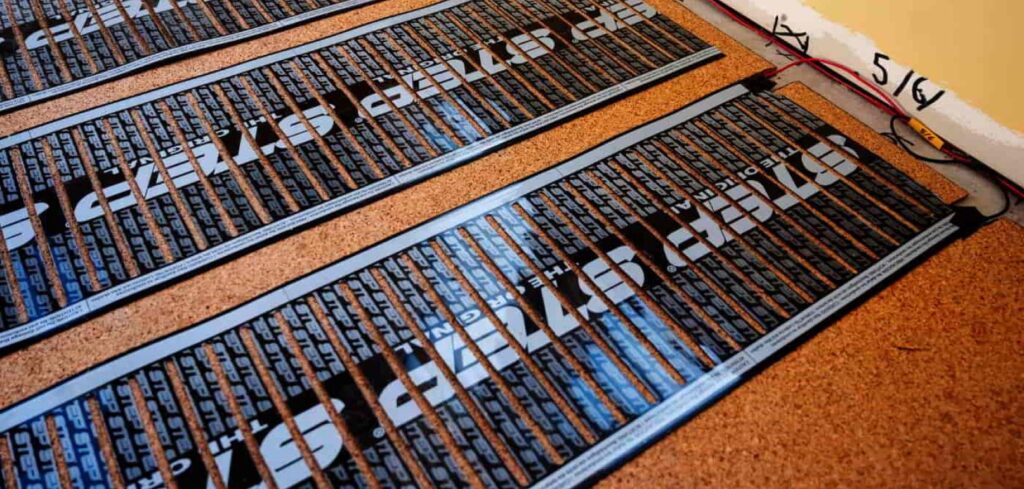10-21 STEP Heat Powered by Solar Energy
STEP HEAT underfloor radiant heating, powered by renewable energy sources like solar panels and windmills, is at the forefront of sustainable heating solutions.
This system is distinguished by its self-regulating, semi-conductive polymer heating elements, which offer a unique blend of efficiency and environmental friendliness.


Energy Efficiency
- Reduced Energy Consumption: STEP HEAT's advanced technology consumes 40-60% less energy than conventional radiant heating systems such as cables and hydronics.
- System Flexibility Capable of operating on both DC and AC power, STEP HEAT is versatile and fully compatible with alternative energy sources, promoting broader adoption.

Cost Savings
- Financial Benefits: Integration with solar or wind energy systems can lead to substantial reductions or even the complete elimination of electricity costs, delivering significant long-term savings.
- Efficient Operation: The inherent efficiency of the system also contributes to lower operational costs, making it an economically attractive option for heating.

Health and Environmental Benefits
- Healthier Living Environment: Unlike forced air systems, STEP HEAT does not circulate allergens or dust, making it an excellent choice for individuals with respiratory issues such as asthma or allergies.
- Reduced Environmental Impact: By leveraging clean and renewable energy sources, STEP HEAT helps reduce carbon footprints and supports sustainable practices.
Heating System
- Type: STEP HEAT low-voltage system
- Features: Offers a silent operation and consistent temperature distribution, avoiding the bulk and noise of traditional gas furnaces.
- Benefits: Ensures a comfortable and evenly heated space without the use of forced air, thus not circulating dust or allergens.

System Installation and Maintenance
- Ease of Installation: The installation process is straightforward. The heating elements can be easily cut to size and connected without the need for specialized mats, facilitating use in a wide range of applications.
- Versatile Applications: STEP HEAT suits various settings, including residential, commercial, and industrial environments. It has been successfully implemented in significant global projects, including NASA’s GPS batteries and seismic sensors on the South Pole.
Conclusion
STEP HEAT represents the future of radiant heating systems, combining exceptional energy efficiency, ease of installation, and health and environmental benefits. Its seamless integration with renewable energy sources like solar and wind power makes it a top choice for those wanting sustainable and cost-effective solutions.





